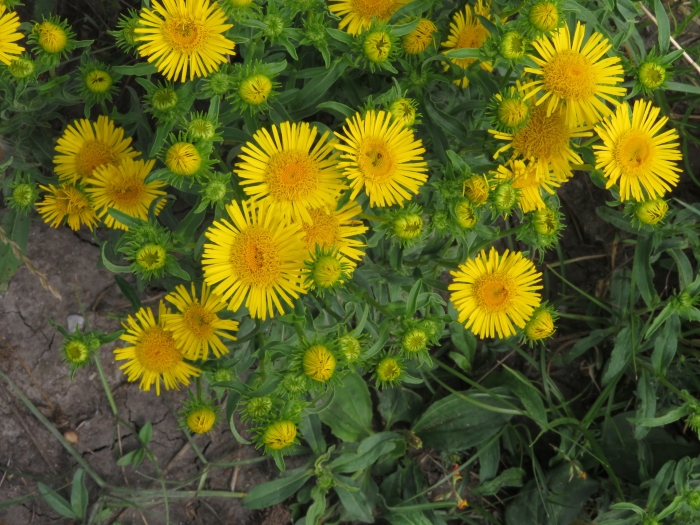British Yellowhead
(Inula britannica)
British Yellowhead (Inula britannica)
/
/

Milan Chytrý
CC BY 4.0
Image By:
Milan Chytrý
Recorded By:
Copyright:
CC BY 4.0
Copyright Notice:
Photo by: Milan Chytrý | License Type: CC BY 4.0 | License URL: http://creativecommons.org/licenses/by/4.0/ | Rights Holder: Milan Chytrý | Publisher: iNaturalist | Date Created: 2021-07-21T13:38:25-07:00 |























Estimated Native Range
Summary
Inula britannica, commonly known as British yellowhead, is a perennial herb that is native to damp meadows, marshes, and the banks of streams and rivers across Europe and Asia. It has also become naturalized in parts of North America. This plant typically grows up to 30 inches tall and features lance-shaped leaves with toothed margins. The yellow ray and disc florets are arranged in a capitulum, blooming from late summer to early autumn and are moderately showy, attracting pollinators such as bees and butterflies.
British yellowhead is valued for its medicinal properties and is used in traditional Chinese herbalism to treat respiratory issues and digestive problems. Its chemical constituents, which include sesquiterpene lactones and flavonoids, have demonstrated anticancer, antioxidant, anti-inflammatory, and hepatoprotective effects. In cultivation, it prefers full sun to partial shade and moist, well-drained soils. It is often grown in herb gardens, naturalistic plantings, and as a part of wetland restoration projects. However, gardeners should be aware of its potential to spread aggressively, especially in areas with suitable wet habitats.CC BY-SA 4.0
British yellowhead is valued for its medicinal properties and is used in traditional Chinese herbalism to treat respiratory issues and digestive problems. Its chemical constituents, which include sesquiterpene lactones and flavonoids, have demonstrated anticancer, antioxidant, anti-inflammatory, and hepatoprotective effects. In cultivation, it prefers full sun to partial shade and moist, well-drained soils. It is often grown in herb gardens, naturalistic plantings, and as a part of wetland restoration projects. However, gardeners should be aware of its potential to spread aggressively, especially in areas with suitable wet habitats.CC BY-SA 4.0
Plant Description
- Plant Type: Herb
- Height: 1-1.5 feet
- Width: 0.75-2 feet
- Growth Rate: Rapid
- Flower Color: Yellow
- Flowering Season: Summer
- Leaf Retention: Deciduous
Growth Requirements
- Sun: Full Sun, Part Shade
- Water: Medium
- Drainage: Medium
Common Uses
Border Plant, Butterfly Garden, Deer Resistant, Low Maintenance, Rabbit Resistant
Natural Habitat
Damp meadows, marshes, and stream and river banks across Europe and Asia
Other Names
Common Names: Meadow Fleabane, British Elecampane
Scientific Names: , Inula britannica,
GBIF Accepted Name: